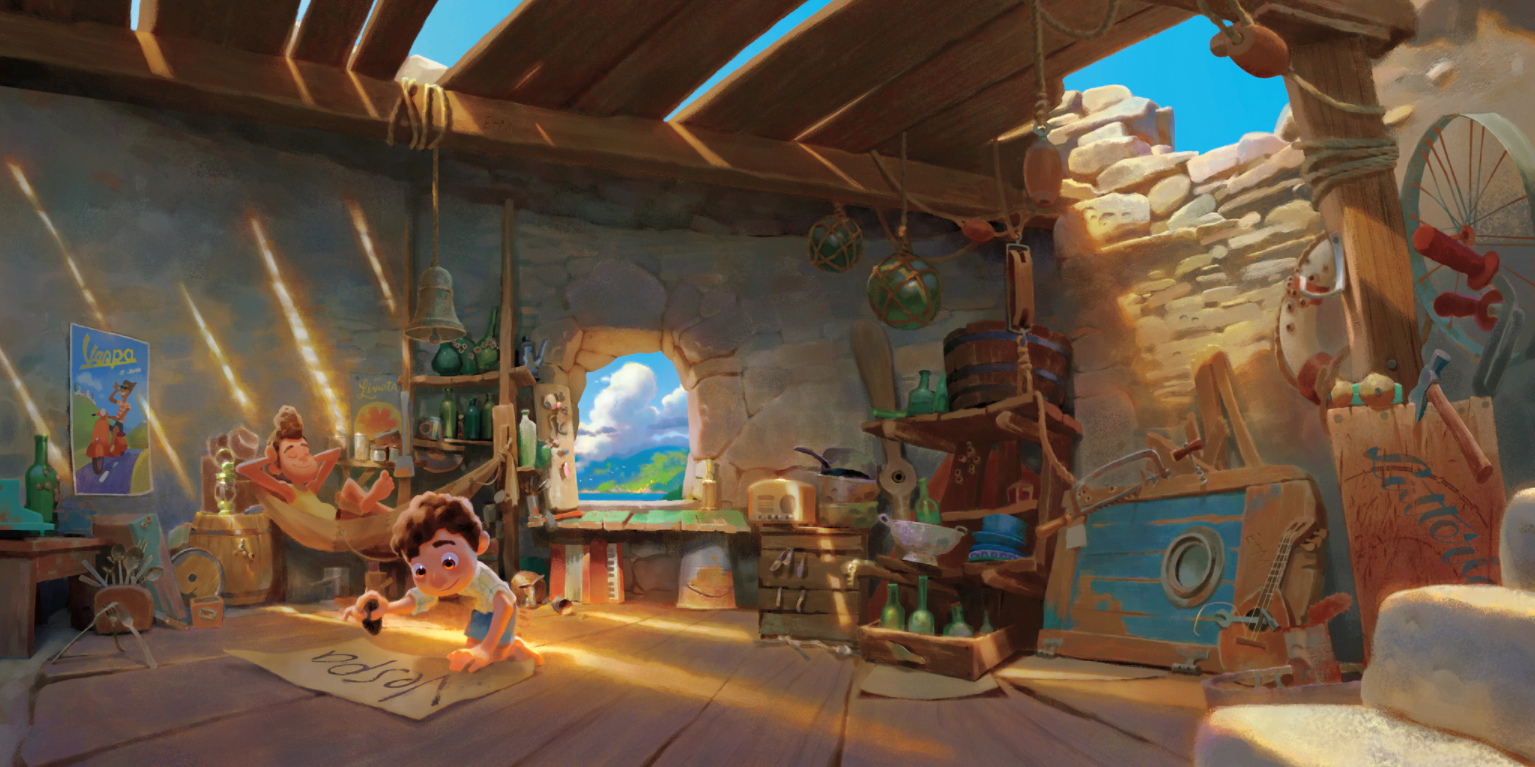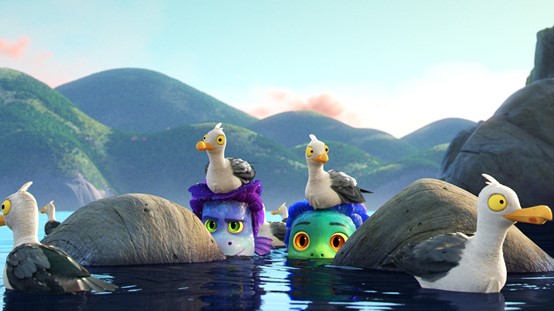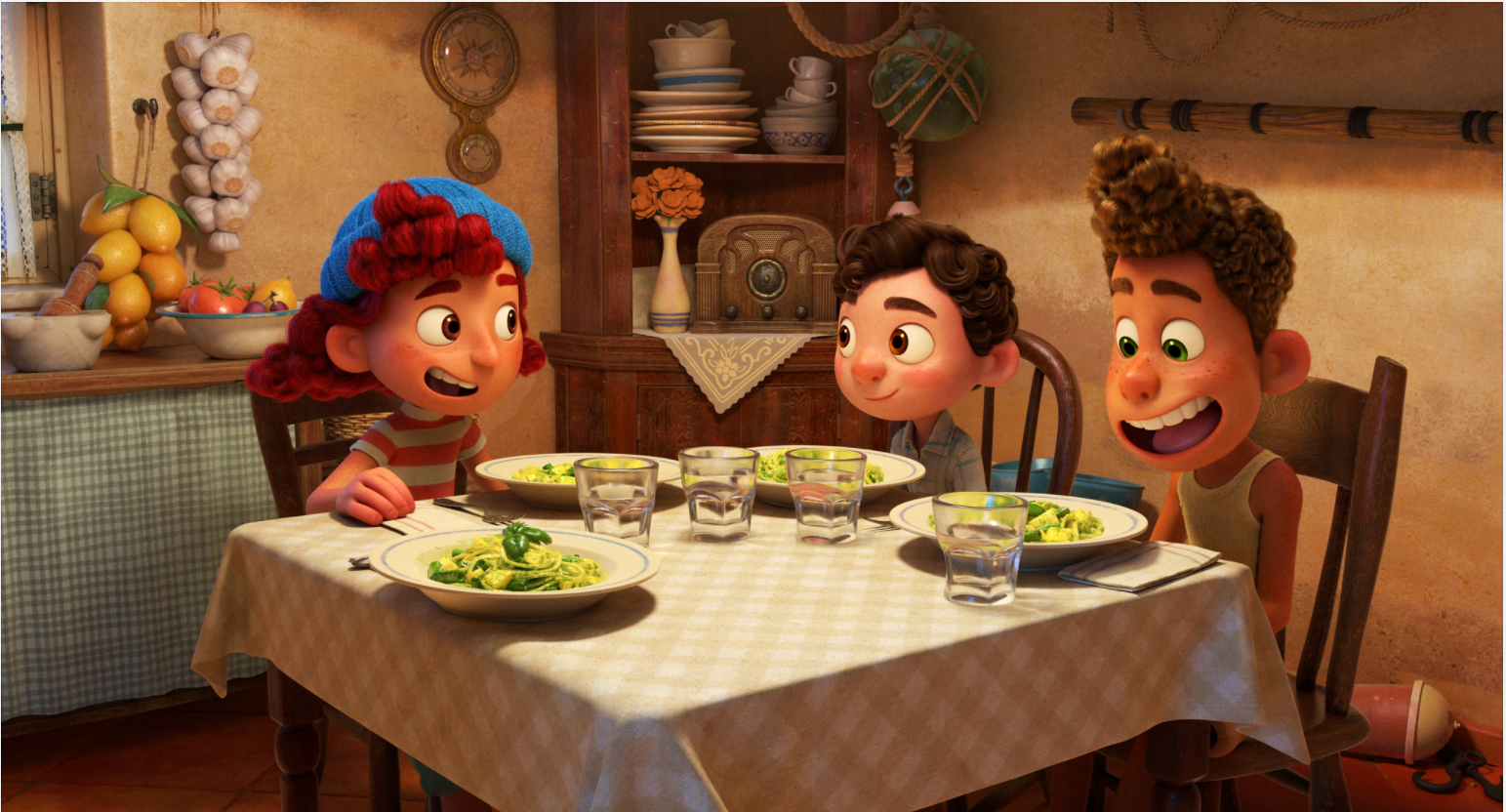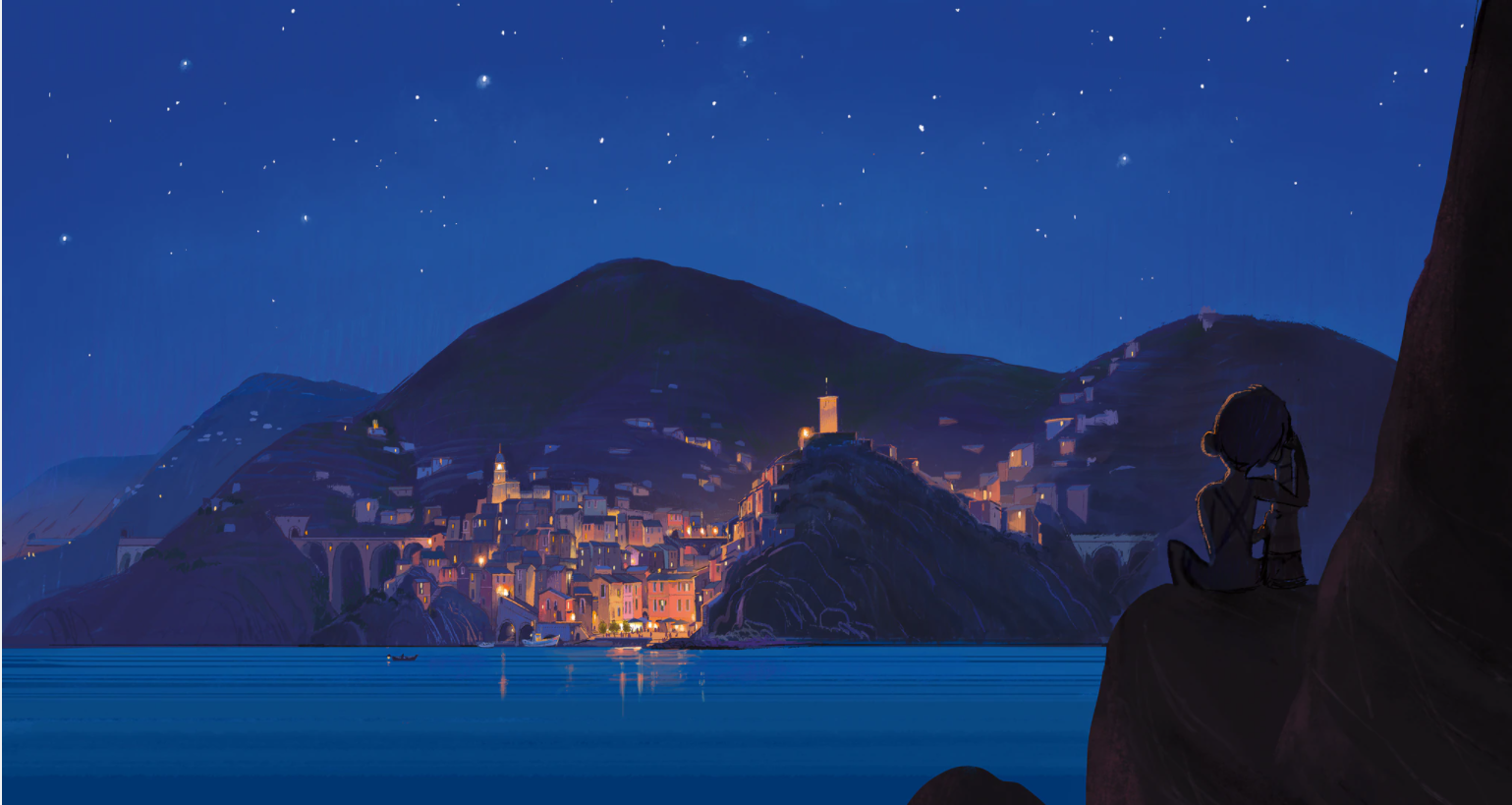The Animation and Effects Behind Pixar’s Luca, Now Streaming

We’ve been eagerly awaiting the release of Pixar’s new animated film Luca, and it’s finally here! Directed by Enrico Casarosa (“La Luna”), produced by Andrea Warren (“Lava,” Cars 3), and starring Jacob Tremblay as Luca and Jack Dylan Grazer as Alberto, Luca is now streaming exclusively on Disney+.
The movie tells the story of Luca, a young, inquisitive sea monster who lives with his family under the sea, and has been warned to stay hidden from the dangerous humans above the surface in the nearby Italian village. He’s done so all his life, until one day he meets Alberto, another sea monster, who lives by his own set of rules, dreams, and aspirations. They quickly form a friendship that introduces Luca to a whole new world, aided by the discovery that the two can turn into humans outside of the water! Besides discovering new friends, new people, and a new way of life, Luca also learns how to move past his fears, to see people for more than what they first appear, and to believe in himself.
The film is a nod to director Enrico’s childhood in Italy, as well as his own friend named Alberto and what their friendship meant to him. The team wanted to honor the look and feel of that time, as well as the Italian village and its culture. “This is a period film,” explains producer Andrea Warren. “We wanted to capture an honesty to the era, no matter how stylized we were making it. [Enrico] drove home the simplicity of the time and place — basic clothing, kids running barefoot, [etc].” Daniela Strijleva, the film’s production designer, shares more background: “We visited the places Enrico went as a child. We watched him climb a 30-foot rock and dive in — realizing after the shock of it that he’d been doing it since he was a child. That extra layer of experiencing his memories and nostalgia really underscores his love of the place. And of course meeting people from the region — fishermen, locals — it gave us so much to work with.”

Luca and Alberto in the hideout
Pixar is famous for their ultra-realistic animation and remarkably spot-on visuals, but Enrico wanted Luca to have more of an artistic, illustrated feel. This created a wonderful challenge for the team. Effects supervisor Jon Reisch explains, “We started with what we knew and what we were most comfortable with, in this more physically-based world where we come from — so all of the simulation tools had this sense of physics and motion that really wants to result in this more photorealistic look.” He details, “But we were always being pulled back by Enrico to get this more simplified look. Even from “La Luna,” you could tell where Enrico’s heart and his style lies as an artist. So it was a lot about just really listening to him, listening to his input, his critique, and trying to sort of narrow in on what it was that he was asking. I’m really, really pleased about where we ended up.”
The film also borrowed inspiration from Japanese 2D animation, something Enrico spent a lot of time watching while growing up in the 1980s in Italy. “Woodblock prints — beautiful simplifications of reflections, for example — are intriguing and appealing,” he explains. “They seem to inspire much of the Japanese animation and watercolors I admire, so we spent a lot of time looking at that.” Production designer Daniela adds, “Enrico would draw these sinuous, simple shapes of reflections in the water that looked like traditional woodblocks. With that in mind, we were challenged with simplifying the look of a 3D film, which was super fun to do — hitting a certain level of caricature that’s true to Enrico’s style. It’s very expressive and lyrical.” Director of photography David Bianchi agrees, “It still feels like a CG film, but you can sense the hand[s] of the artists touching it.”

Luca concept art
In creating the look of the sea monsters, the artists were inspired by medieval depictions on a Renaissance map from the 1500s, as well as sea monster sculptures found throughout Italy on everything from fountains and benches to mosaic art on the ground. “I really wanted these designs to be unique, a departure from their medieval depictions,” says character art director Deanna Marsigliese. “However, I also wanted to stay true to their decorative origins. You’ll notice beautiful, irregular scale patterns, as if carved by hand. You’ll see different kinds of facial fins, scalloped crests, sharp spines and webbing, and curlicues within the tails. And as our sea monsters age, these features only grow bigger and bolder. They’re beautiful creatures, and combined with their iridescence and gorgeous colors, could pass for pieces of costume jewelry.”
Since they didn’t have a real sea monster on which to base the characters’ movement, the team took inspiration from marine iguanas. “What we saw that was cool was when they swim, the arms and legs just kind of hang there, kind of like an alligator or crocodile, and it’s the tail that does the movement in a left-right pattern, not up and down like a dolphin,” says animation supervisor Mike Venturini. “So we knew right away that we wanted to orient the sea monsters’ fins so it could swim differently. It was a bit creepy — not creepy enough that it was scary, because we wanted it to be appealing, but different enough that you knew it wasn’t a human.”

Luca Transformation
With every new Pixar movie and challenge comes new technology, and this movie is no different. The team had to figure out how to showcase the sea monsters’ transformation to human and back in a fluid and organic way. “We had to develop very specialized technology on this film to make that happen,” says animation supervisor Mike Venturini. “Those shots, on a technical level, are complex, so we had to be really mindful of when we’d show the transformation.” This type of technology was attempted on previous films, but proved too arduous and inefficient. The powerful technology of a transformation rig made it possible. “Instead of turning your character into a sea monster, you could essentially turn them invisible. So now you could lay the second character in and make him invisible, and leave just the feet, and you could pick how faded you wanted that to be, or where you wanted it to be or not be, and it was like, whoa, this is so cool!” beams Michael. Simulation supervisor Henry Garcia’s team added unique touches to intensify the change. “During transformation, the clothing has a little bit of magical wind inside it — it billows out to indicate to the audience that something big is happening. We do something similar with the hair and paddles.When the paddles come in or the hair grows out, we add a bit of a pop to it so there’s movement there.” But even with that great new technology, there is room for improvement. “There’s a lot of possibilities with the transformation rig, so it’ll be exciting to see what future films do. The same way when I started at Pixar on Monsters, Inc., they had to figure out how to do soft fur for Sulley — you couldn’t do that before — then every film has benefited since. Finding Nemo had to figure out water, and every film has benefited since. So I’m excited that this film gets to pay it forward to future Pixar films with the stuff that we built, and hopefully films in the future will build on it and make it more efficient, and even more versatile.”

Luca, Alberto, and Guilia eat pasta
With the goal of a 2D feel in a 3D environment, the effects team had to figure their way around many challenges they had never faced before. “We had to rethink our approach, and use our tools to hit those stylized notes,” says Jon, the effects supervisor. Some challenges were more unique than others, like how to stylize the water in an artistic, less photoreal way. “It was a really involved process,” explains Jon. “We had to first find the look of the ocean, then decide how to push the stylization of the water when it interacted with characters and with splashes.” There was also the challenge of the look, feel, and movement of pasta — after all, you can’t embrace the culture of Italy without its delicious food, can you? “Getting the pasta to move, especially as fast as the boys are trying to shovel it into their faces at dinner with Massimo and Giulia was really tricky. It was a lot of back and forth with our animation department,” Jon shares. “The animators had provided where they thought noodles might be hanging out from in between their fingers or hanging out of their mouths, or how it would kind of whip around, so it was really a fun challenge to get in there with them. Then we added that extra dynamic of the motion of the noodles, and that just added a finishing touch to it. It took us about 2 months to get that right, [with the] new simulation tools,” he details.

Seaside concept art from Luca
In the end, the team succeeded in developing the artistic style of this film, as well as giving a significant nod to the look and feel of Enrico’s hometown during his childhood. “I had the luck to grow up in Genoa, a port city on the Italian Riviera,” Enrico says. “The towns are stuck in time — they’re so picturesque.” And the entire team enjoyed embracing and displaying the town’s culture and way of life. Producer Andrea notes, “There’s a lovely theme about wanting to be a part of something outside of our immediate families — wanting to experience cultures beyond our own. Luca discovers the power of exploring and celebrating another culture, while learning to honor and share his own.” Also hidden inside the beauty and culture of the movie is a very powerful message of friendship and acceptance — of yourself as well as others. “Sea monsters are a metaphor, really, for feeling different or excluded,” reveals Enrico. “I love the sense that all of our characters in some way feel different or unusual. Luca and Alberto so passionately want to be part of this other world, but they fear they won’t be accepted as they are. And yet, they [still] love being sea monsters.”
Source:Pixar

熱門頭條新聞
- INTERVIEW: The Winning Formula For “Plankton: The Movie”
- Submissions for 2025 Annecy VR Works Are Open
- ‘Rudy – The Prophecy of the Flying Boy’ Belgian Animation Feature in Development
- Purple Brain Production
- NetEase Games’ Subject Matter Experts to Present Tech Talks at GDC 2025
- Autodesk announces a workforce reduction
- Swedish Methods for Gender Equality Driving Change in the Games Industry
- Jagex announces CEO Transition
